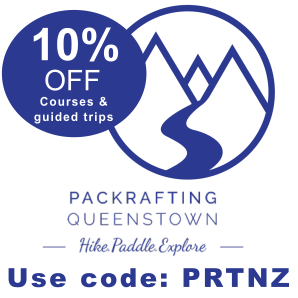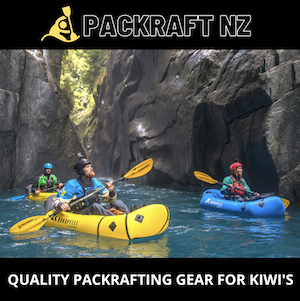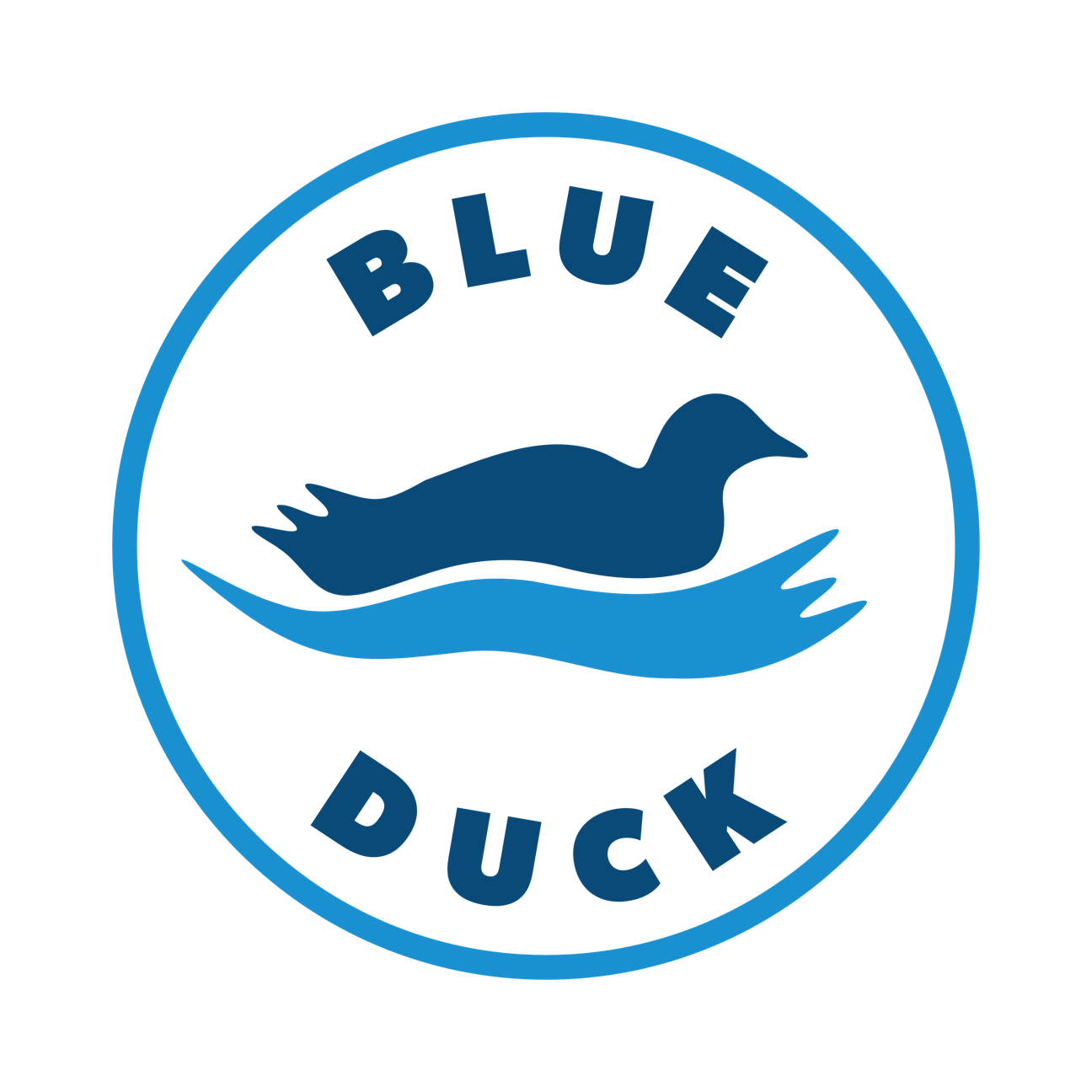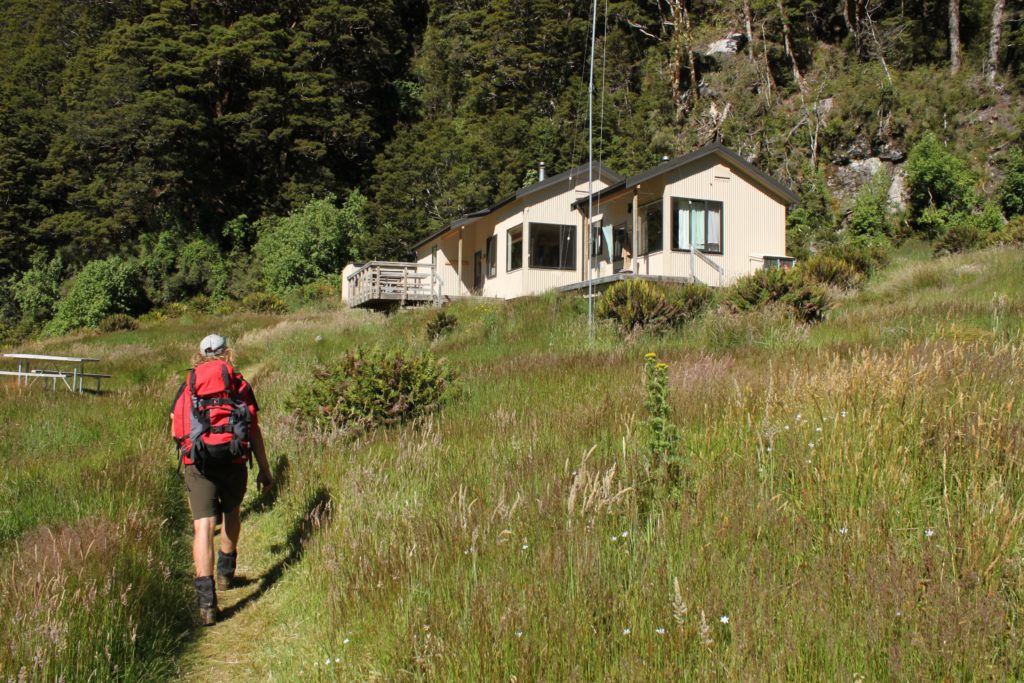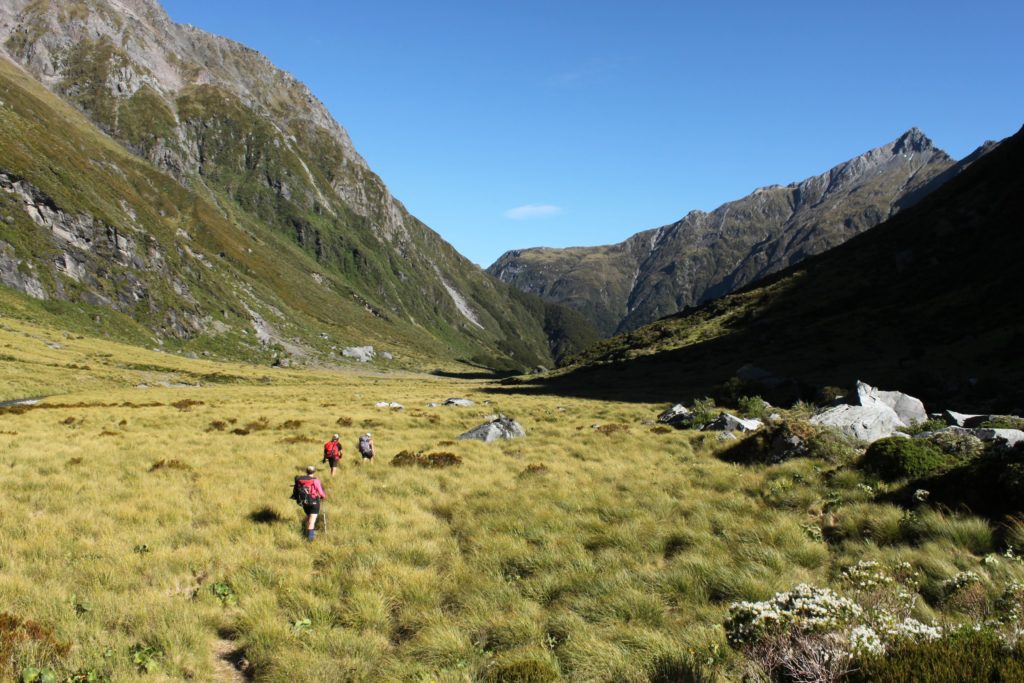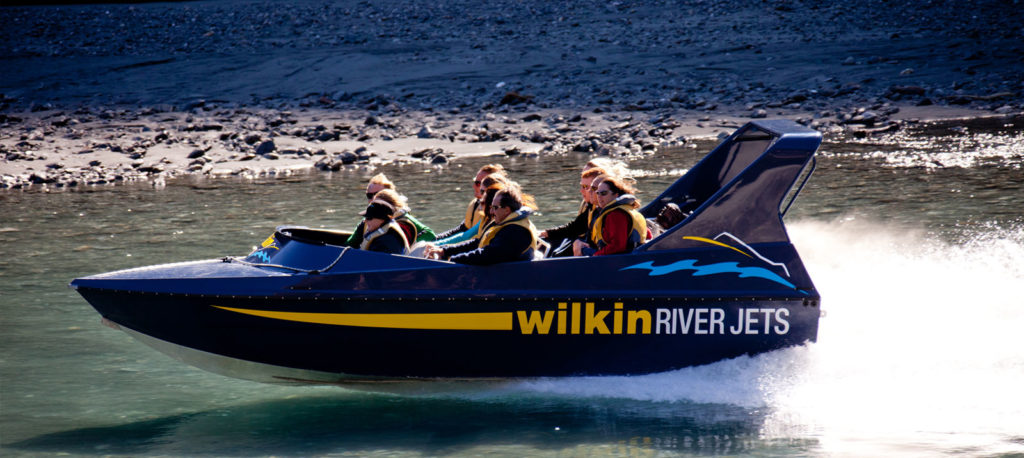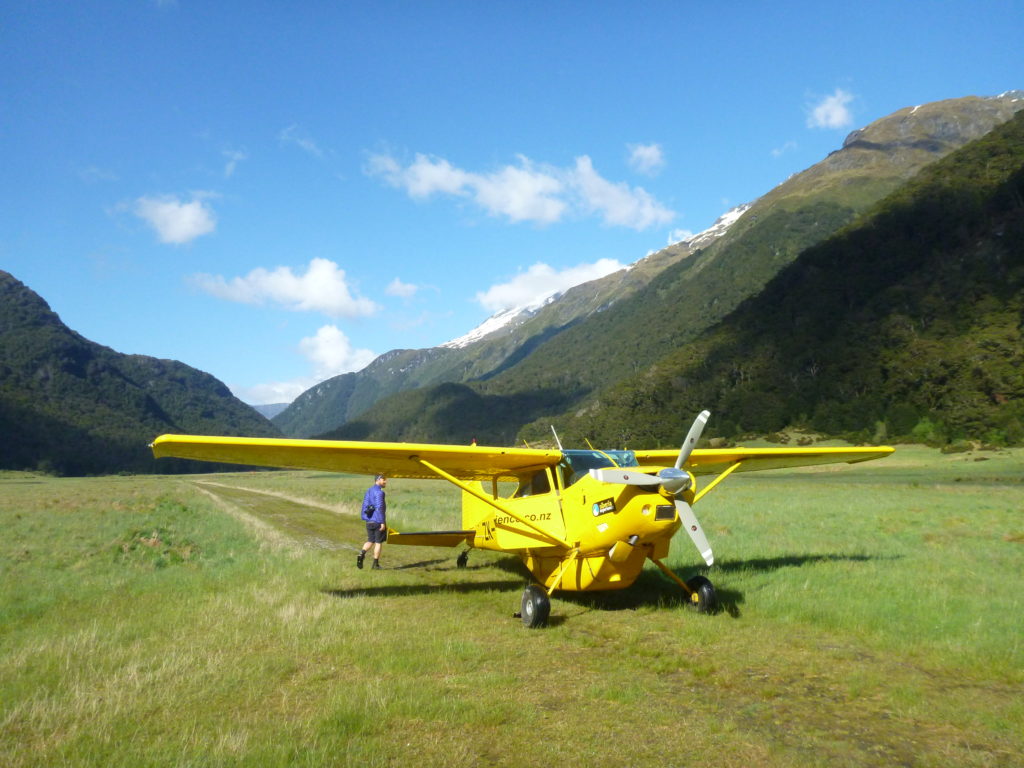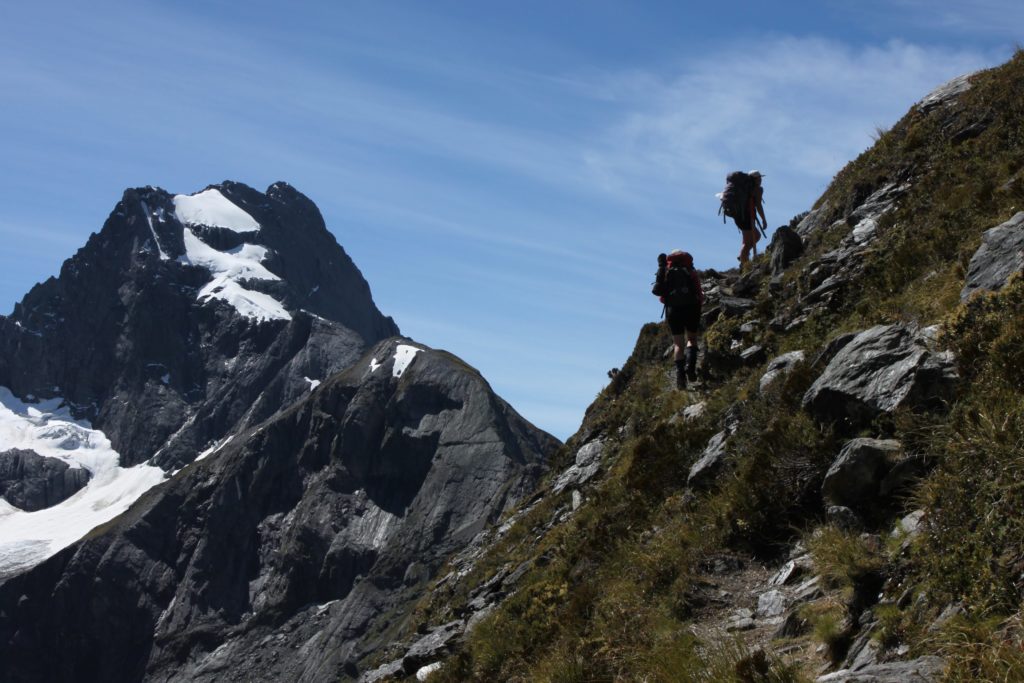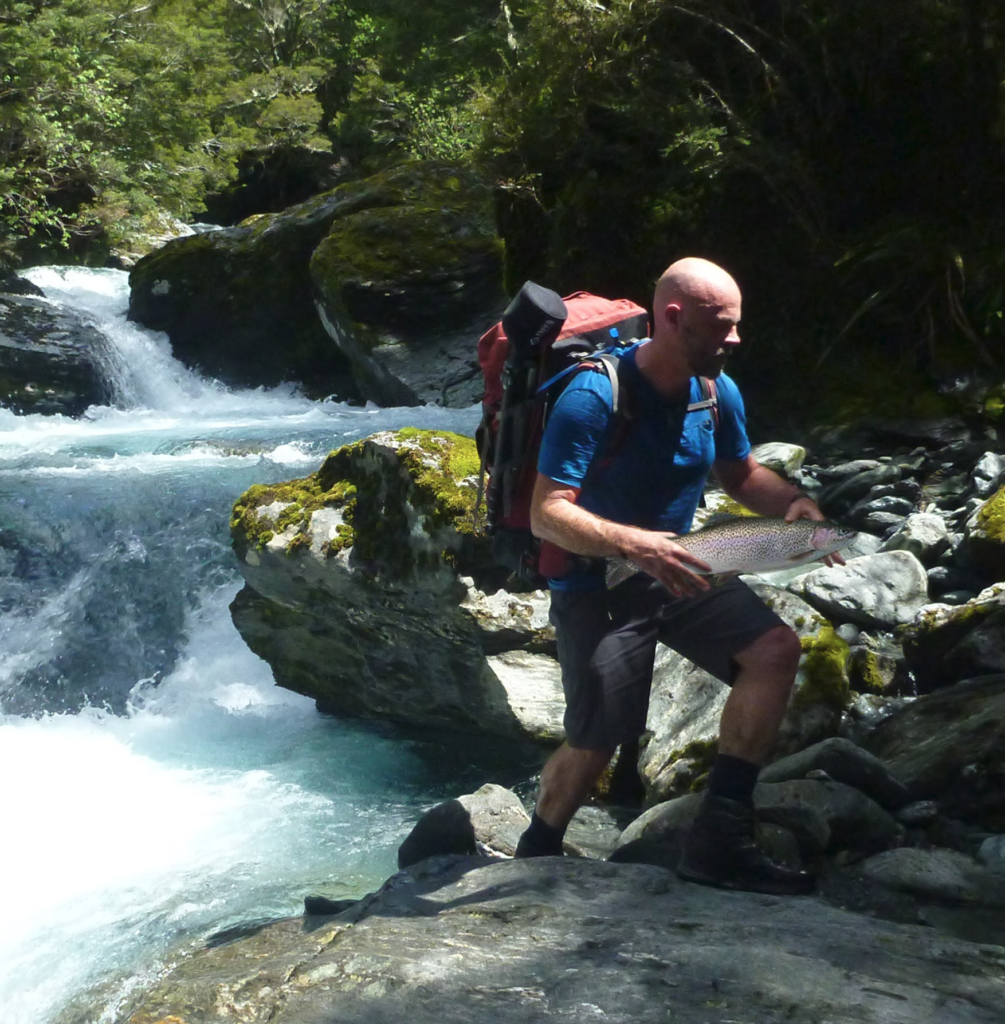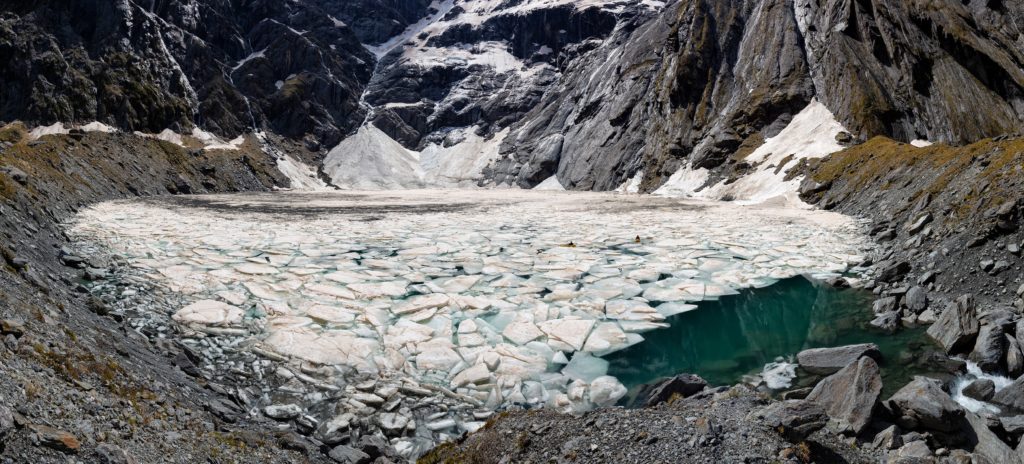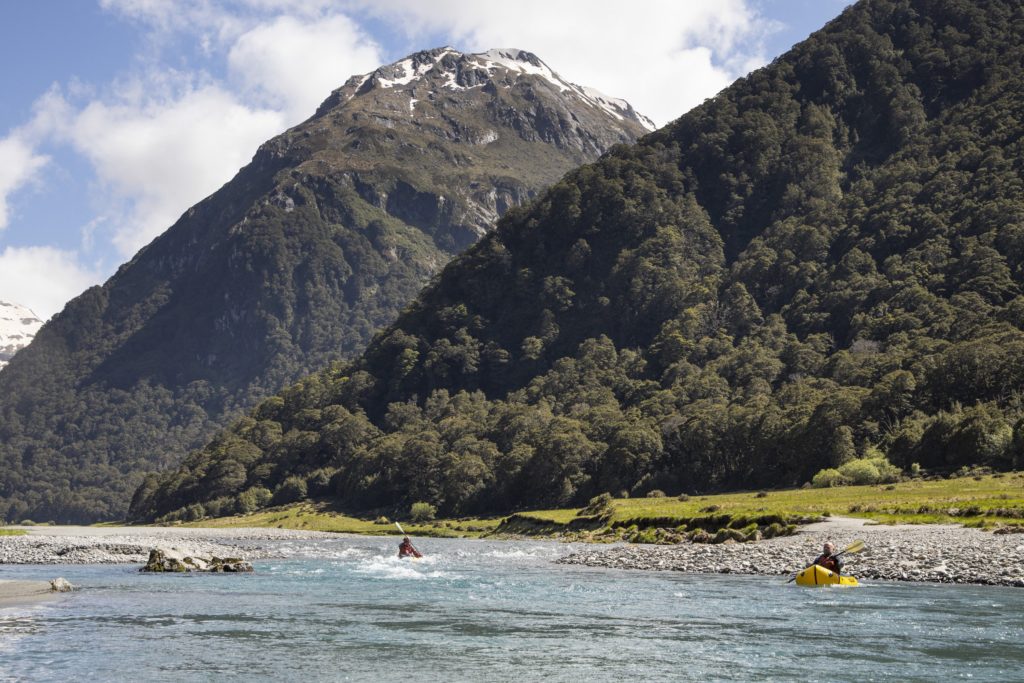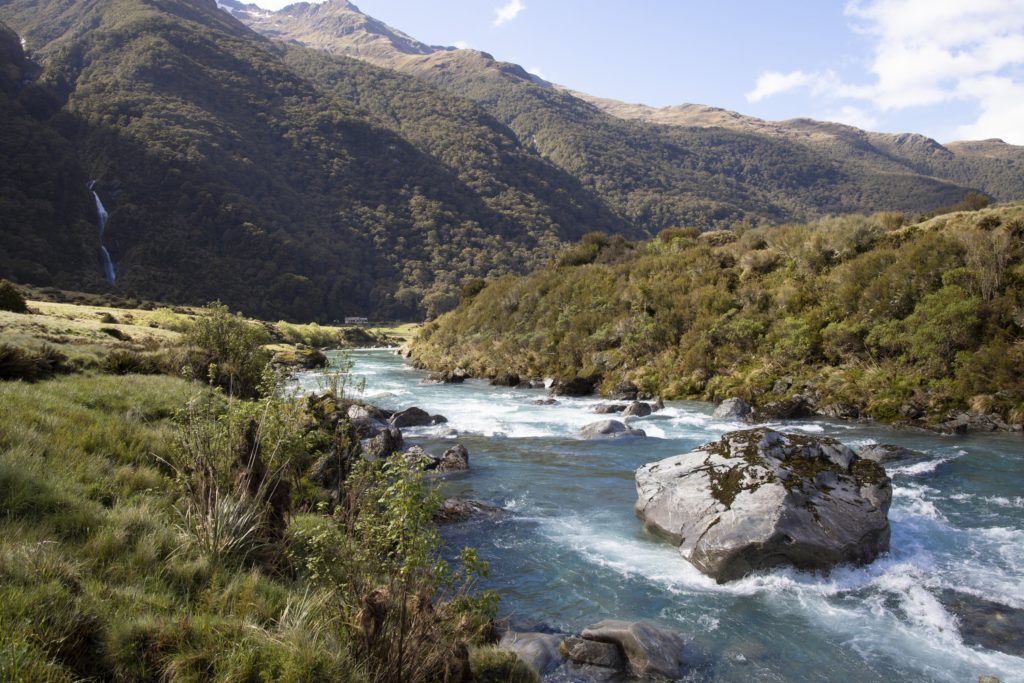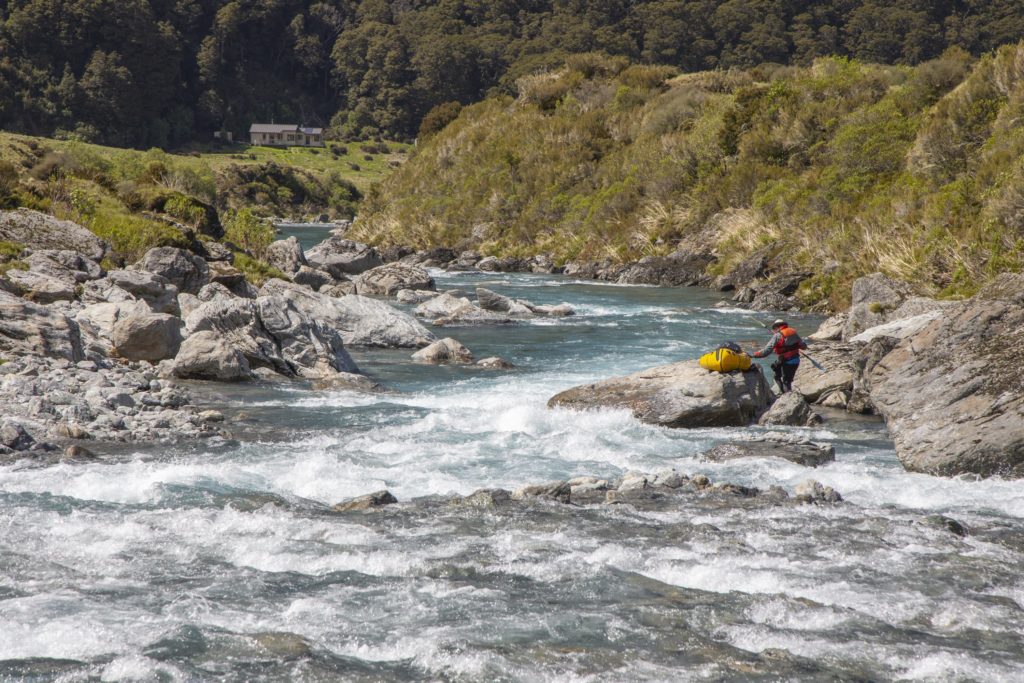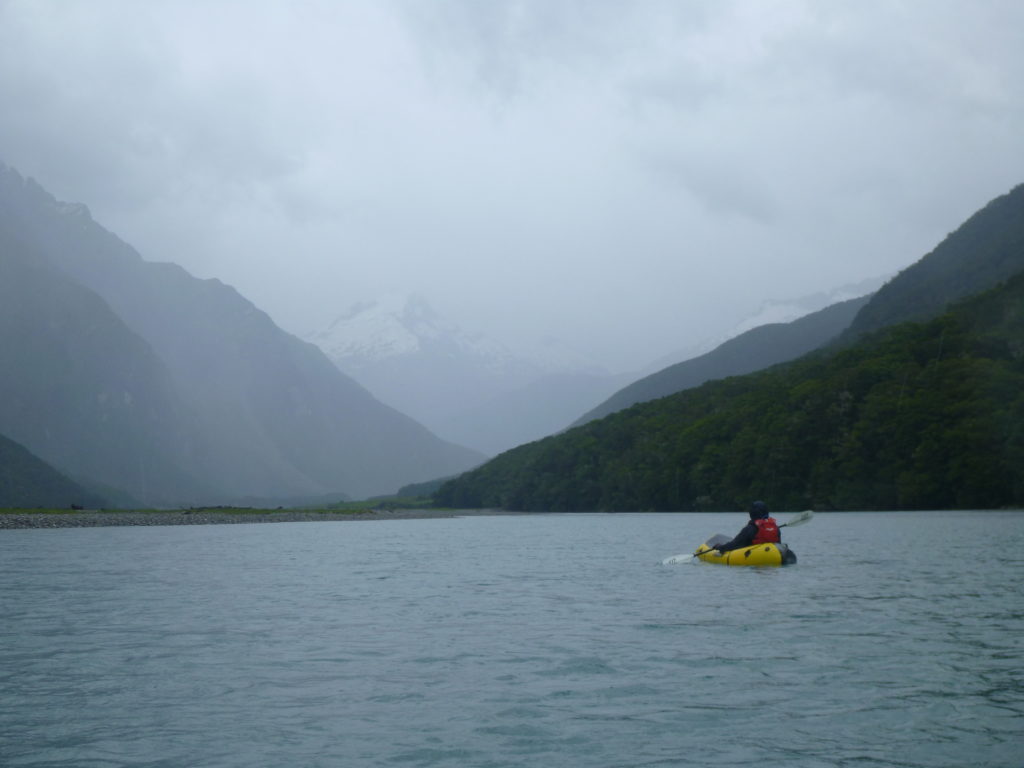The Young-Wilkin (Gillespie Pass) circuit is a classic tramping route, and often people use a water taxi to exit down the Wilkin. But with a Packraft, strong beginners can enjoy some fun paddling and relaxing floating down a spectacular corner of Aspiring National Park. Plus the side trip to Crucible Lake and a paddle by the Icebergs is one not to be missed!
Thanks to Dan Clearwater for the words + some photos, Richard Sidey and Christopher Thompson for the other images.
You’ll see photos of people paddling without helmets: we’d heard it was all just a float, so chose not to bring them. In hindsight, the upper & mid Siberia both have enough rocks/hazard that a helmet would have been wiser…
Planning
Itinerary
An anti-clockwise circuit is the way to do this loop: The Young is grade IV, and the paddleable bit is below the forks, so done as a day trip for strong paddlers.
One of the cool things about this trip is that there’s lots of ways to vary it, but using huts or tents, taking shorter days or massive ones, side trips or not. This trip page will talk you through this rough day plan:
- Makarora to Young Hut (6-7hrs)
- Young Hut to camp near the Siberia/Crucible confluence (5-7hr)
- Take your boats up to Cruicible lake (2-3hrs one way) laze about on the lake, then headstream (1-2hrs) to camp at the Siberia forks
- Paddle the Siberia (2-3hr) then get out and walk the track to Kerin Forks Hut (2-3hr)
- Paddle the Wilkin (2-3hr) and get back to your car
If you were in a hurry, you could do it in 3 days, by staying at Young and Siberia Huts, but 4-5 is way better.
View Larger Topographic Map
Huts and Camping
Young and Siberia Hut require bookings in season: See the Gillespie Pass Circuit page on the DOC website for more info. Kerin Forks Hut is first come first served and does see a bit of use from groups of Jet boaters.
They are both pretty fancy huts, and you can expect they will be likely be booked out a lot of the time. Camping around Young Hut it is specifically discouraged, but you can book and camp by Siberia Hut.
Camping is possible in the lower Young valley and Young Basin,
Its also possible in the flatish section of Gillespie Stream, in the Siberia Valley (but not on the airstrip!). In the Wilkin, the true left is national park until Dan’s flat. Below here are sections of farm land and camping isn’t recommended (Cattle graze quite high in the Wilkin, and can be quite curious).
Weather
Plenty of the side streams in the Young Valley are subject to flooding in rain (ie uncrossable) Also the alpine crossing by Gillespie pass is on steep tussock with some bluffs; in wet conditions there is real slide hazard. The rivers don’t need rain to be paddled, so pick some settled weather, at least until you’ve crossed into the Siberia Valley.
Helmets and rescue gear?
We underestimated the Siberia; we’d heard it was just float, so didn’t take helmets or throw bags which was a mistake in hindsight. If you were only floating the Wilkin, you could be forgiven for leaving helmets behind…
Car shuttle/Didymo/Water taxi
The Makarora River certainly has didymo: although its tempting to park at the DOC campsite at Sawmill Flat (mouth of the Young) and paddle accross, you’ll almost certainly be bringing it into the Siberia, which is currently pristine. To avoid that, best bet is to ford it on foot if its low enough or use the Blue-Young link track if its not.
Another good option would be to use the Watertaxi: If you ask nicely/pay for it you might be able to park your car at the take out (Wilkin Rd) and get a taxi from there up to the Young mouth. Contact Wilkin River Jets
Fly in option
If you don’t have enough time, or not enough energy to hike in over the pass, then you can charter a flight with a bushplane from Southern Alps Air into the airstrip by Siberia Hut. Its pretty affordable if you fill the plane up (4 passenger seats). There are not many places in NZ where you can land in the mountains in a fixed-wing aircraft, so its kind of neat in its novelty.
Hot tips for the walking bits
After you’ve got to the Young track without getting Didymo on your boat, follow your nose up valley. All the info about the route is listed on the Gillespie Pass Circuit page on the DOC website, so read that up first.
The crossing of Gillespie pass is best to start from at least Young Hut: its a solid climb (especially with packrafts) and because you’ve picked good weather, you’re going to want to savour the views.. Allow yourself a day from there to wherever you end up in the Siberia.
If you have the time it is well worth a half-day side trip to Cruicible Lake. There is one unbridged crossing near the bushline: after rain or on really hot days with snowmelt this can prove impassable. Snowmelt can catch you out. if crossing in the morning is near the limit of your abilities, in the afternoon it will be higher…
Earlier in the summer, you’ll find Cruicible full of ice: Its a magic thing to paddle amongst the bergs..
The upper Siberia (to the forks) is a gorgeous and straightforward walk and you’ll have the place to yourself.
Its only a few hours walk from Siberia to Kerin Forks Hut, and no, the Siberia Gorge isn’t paddleable (unless its in flood and you can do V+) According to local river SAR teams, a packrafter started down once and got rescued a few hundred meters down stream from a very precarious position as he tried to climb out of the very steep valley…
Siberia Stream (I+/III-)
From the upper forks, it can be a bit boney in dry conditions. The paddling is super scenic & gentle grade I+ wave trains, until about 1km above the Siberia Hut.
After a medium sized side stream (where you can take out easily if you want to portage), the river banks rise up, boulders appear and the river does a large right turn, with a lead-in bit of II to a short and sweet III- rapid. I’d call it easy III because you need to maneuver cross current within the rapid to avoid boulders. Its so short that you can see the hut from the start of the mini-gorge.
Apart from a short bit of high river bank, you can access the main track on the true left without much trouble throughout the rapids if you decide to portage.
To be honest, we’d heard that the whole Sibieria was basically a float, so we’d opted not to bring helmets: In hindsight I’d suggest people bring them if they are paddling any part of the Siberia.
Below Siberia Hut, keep your eyes peeled for a major tributary valley on the true right. The confluence marks the take out at a large pool, just above where the river steepens quickly into the gorge. (Mad keen paddlers might consider lapping a few top rapids: it looks like technical grade III at the start, then steep AF after that…)
Wilkin River above the forks (II)
If you get to Kerin Forks Hut early and fancy a little more whitewater, just head up the Wilkin a few km for some nice grade II. Put on where it looks good. Don’t follow the track away from the river: it gets super steep above here (IV/V with rain needed)
Wilkin River below the forks (I+)
The Wilkin is a large braided river, which is relatively shallow and slow-moving between the riffles. There are a number of small wave trains and mini rapids, but none really require any skill or manoeuvering to get through.
There are a few places with strainers near the river bank, but the greatest danger on this river is Jet Boats. Wilkin River Jet run regular trips up and down the river and private Jetboats go as well. If you hear them coming, move to the same side of the river and give them as much space as you can to let them pass.
On a hot summers day, there will be a strong up-valley breeze: Leaving after breakfast can make things easier.
At the confluence with the Makarora, you’ll have to carry your boats a little to get back to your car at the end of the paddle. It can be a bit disorienting, trying to figure out where you’ve arrived and where the road is: a map and/or GPS is helpful…

